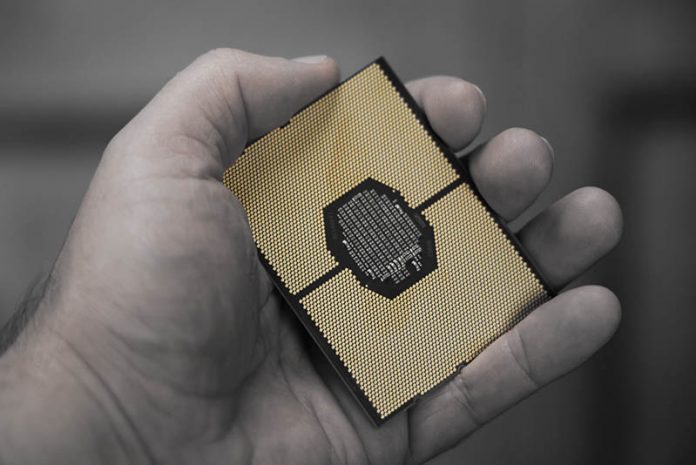In the era of the first and second generations of Intel Xeon Scalable, the Intel Xeon Gold 6×30 SKUs have been very popular. Intel positions these SKUs above the Xeon Gold 5000 series and we generally get very reasonably priced CPUs with solid core counts and lower power consumption. All told, this is a recipe for mainstream success, especially for those looking at relatively small costs to exit the Xeon Gold 5000 series. With the Intel Xeon Gold 6230R, we get a new part that offers 26 cores at under a $1900 list price. In our review, we are going to take a look at the parts and give our perspective on performance and market positioning.
Intel Xeon Gold 6230R Overview
The Xeon Gold 6230R is one of the few SKUs in the Big 2nd Gen Intel Xeon Scalable Refresh stack that does not have a great translation to a public pre-refresh SKU. Most of the new “R” parts have another part that was 100MHz or so different in base or turbo clocks and then a 60% discount or so applied for stepping socket-to-socket links down from 3x UPI to 2x UPI. The Xeon Gold 6230R does not have a direct comparison making it one of the most unique SKUs we will review. There was an Intel Xeon Platinum 8270 26-core SKU with higher TDP, 26 cores, and high clock speeds, but that is not comparable. As a result, we are doing what we can do and testing the part.
Key stats for the Intel Xeon Gold 6230R: 26 cores / 52 threads with a 2.1GHz base clock and 4.0GHz turbo boost. There is 35.75MB of onboard L3 cache. The CPU features a 150W TDP. These are $1984 list price parts. If you want to see more on the spec side, here is the ARK page for these CPUs.
Here is the lscpu output for the Intel Xeon Gold 6230R:
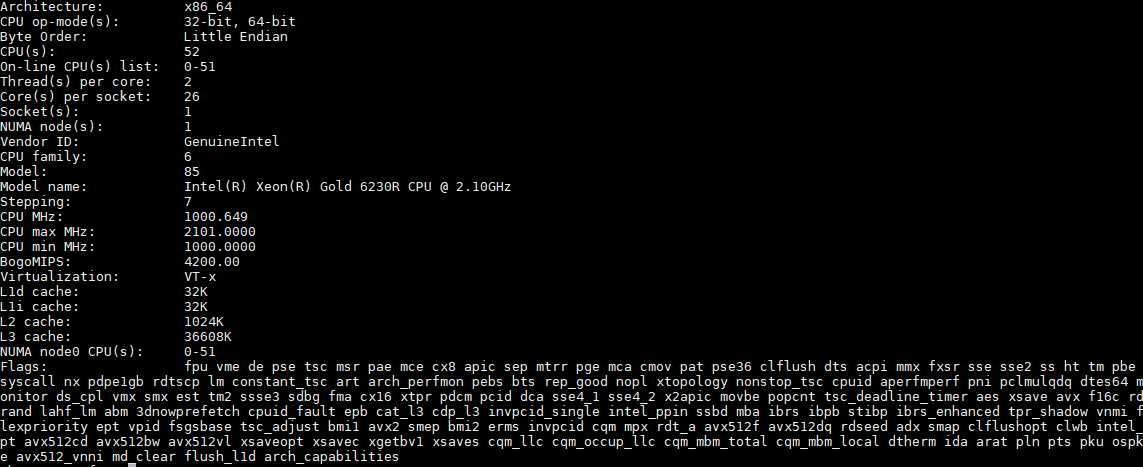
26-cores is perhaps the defining feature here. The value for those who need to increase cores counts should make a lot of sense. While higher-core count parts were well over $120/ core previously, the Intel Xeon Gold 6230R is close to $73 per core.
Historically, the Xeon Gold 6×30 range has had a 2.1GHz base clock and turbo clocks in the 3.7GHz to 4.0GHz range since the Intel Xeon Gold 6130 was launched in 2017. That Gold 6130 was a 16-core part at 125W. In 2019, we had the Gold 6230 with 20 cores also in that 125W TDP level. With the Gold 6230R we get 26 cores and 150W TDP. That means we have a 62.5% increase in cores from 2017 and a 30% increase in core count from 2019 with the new parts.
One feature that was removed to make this refresh part was the third UPI link that enabled 4-socket and also high-speed 2-socket connectivity. Enabling those three UPI links uses more power and increases trace count/ complexity in a motherboard. As a result, not all systems support this feature and that is why we noted it in our Supermicro BigTwin SYS-2029BZ-HNR Review.
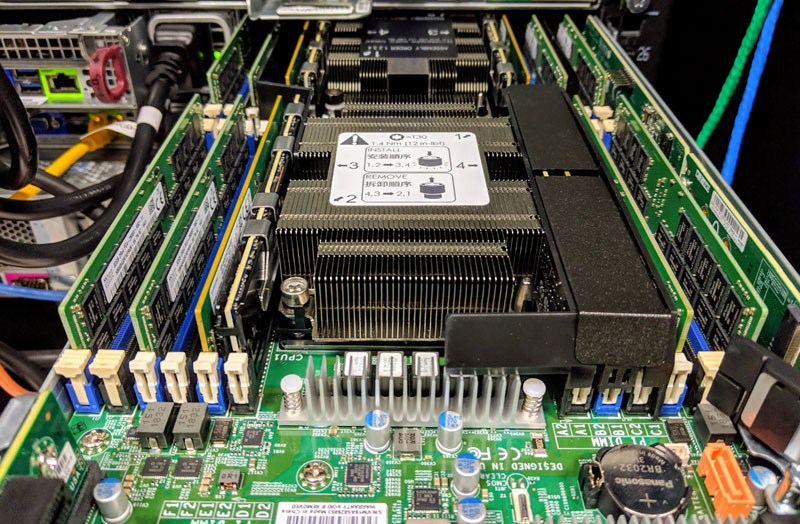
Not all systems are designed for a 3x UPI link in a dual-socket configuration, especially since this adds costs. In some markets such as for hyper-converged servers as it adds ~50% more socket-to-socket capacity. As a 150W part, this is likely less of a concern than with the higher wattage 205W TDP parts.
In our benchmarks, we are going to investigate the performance impact. First, we are going to take a look at the test configurations then get into details.
Intel Xeon Gold 6230R Test Configuration
We are using a testbed that is designed for the higher-205W TDPs that some of the new refresh parts can hit, specifically the Supermicro SYS-2029UZ-TN20R25M or “2029UZ-TN20R25M” server. We published our Supermicro 2029UZ-TN20R25M Review recently if you want an in-depth look at the machine.
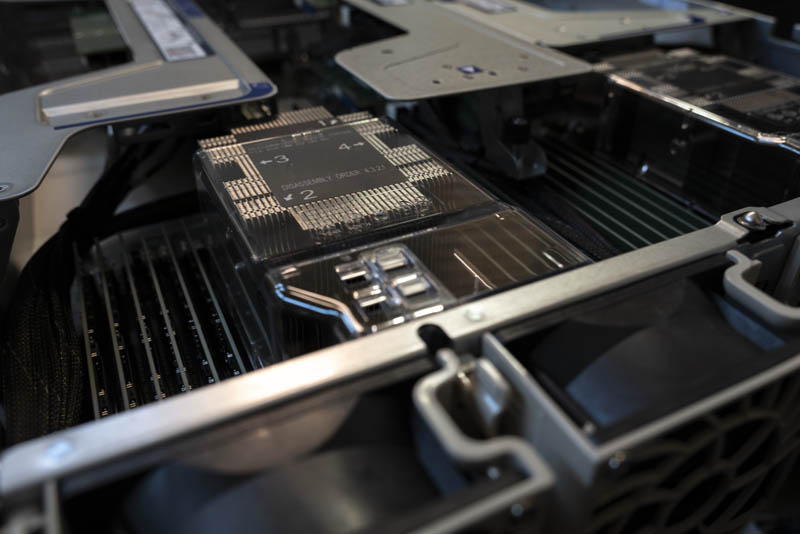
The Supermicro 2029UZ-TN20R25M is a 2U dual-socket server that is part of the company’s “Ultra” line meant to compete in the higher-end of the server market. We requested this server specifically because it has 20x NVMe SSD bays, it supports Intel Optane DCPMM, and it has built-in 25GbE. 25GbE is a major networking trend and we have already started doing overviews of 25GbE TOR switches such as the Ubiquiti UniFi USW-Leaf 48x 25GbE and 6x 100GbE switch overview and the Edgecore AS7712-32X Switch Overview. We have done adapter reviews such as the Supermicro AOC-S25G-i2S, Dell EMC 4GMN7 Broadcom 57404, and the Mellanox ConnectX-4 Lx. We also have more 100GbE switch reviews in the publishing queue so we wanted to start focusing on the new systems.
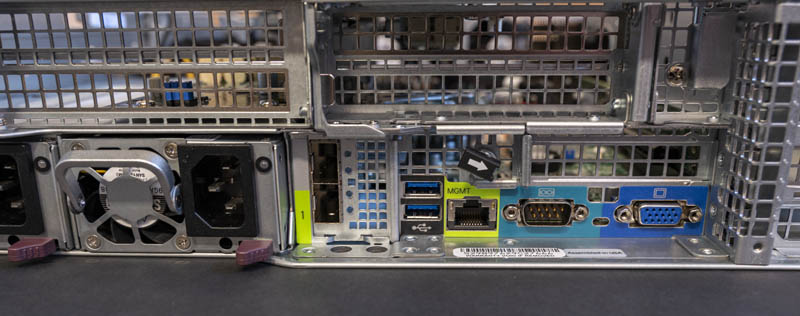
This Supermicro 2029UZ-TN20R25M platform is significant for another reason. It supports 205W TDP CPUs. That is a feature not every dual Xeon server has. For this reason, we wanted to use the Supermicro 2029UZ-TN20R25M which is a higher-end platform capable of handling this range of refresh CPUs. We do not need it for lower TDP SKUs like the Xeon Gold 6240R, but for higher-end SKUs we do. Here is the basic configuration:
- System: Supermicro 2029UZ-TN20R25M
- Memory: 12x 32GB DDR4-2933 DDR4 DRAM
- OS SSD: 1x Intel DC S3710 400GB Boot
- NVMe SSDs: 4x Intel DC P4510 2TB
Overall, this is a fairly simple configuration, but we are focused on CPU performance here. We are taking a further step and we tested these CPUs both in single and dual-socket configurations, so we will have some results of both views. The Supermicro Ultra server we are using we recommend using only in dual-socket configurations, however, we thought this would be a good way to spice the review up.
Next, let us get to performance before moving on to our market analysis section.

